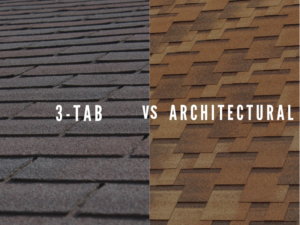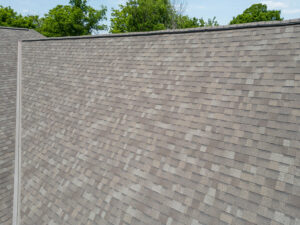A house roof is a major part of a building that performs many functions. It sheds water and helps to regulate temperature in the house.
The frame of the roof can be built from pre-fabricated trusses or from framing lumber cut on-site. The principal rafters form a triangle with the king’s post in the center. You’ll be glad you read this!
Shingles
A shingle is a decorative and sturdy roof covering that protects the materials beneath it, such as plywood or a vapor barrier. Shingles come in a variety of shapes, colors, and styles to complement any design aesthetic.
Dark shingles reflect sunlight, pushing heat into the house rather than pulling it out. That’s why they can help a home save on energy bills, especially in hot climates. However, they may wear more quickly and show damage more readily than lighter shingles.
To avoid this problem, opt for a laminated asphalt shingle with a limited lifetime warranty. Ask the manufacturer to provide a copy of the warranty and check with the previous owner to make sure the coverage transfers to you in case you buy the house. Shingles are also available in a wide range of tones to match many different house siding colors. Matching the shingle color to the trim helps tie the exterior together and hides deterioration from sun damage or neglect.
Underlayment
Shingles may be the faces a roof shows the world, but underneath, the underlayment plays an equally important role. Underlayment acts as a barrier between the roof deck and rainwater or snow accumulation, keeping water from infiltrating the home. This is especially helpful in preventing ice dams and other winter roof damage.
When underlayment fails, it creates the perfect conditions for rot, mildew, and mold to infiltrate a home’s walls and ceilings. This can lead to a variety of problems, including expensive roof repairs or a wood window replacement down the road.
Roofing professionals recommend choosing a synthetic underlayment. Also known as non-bitumen underlayment, these products use a synthetic base mat saturated in asphalt and mixed with fiberglass for superior tear resistance and stability. These underlayments are typically backed with foil moisture vapor barriers that help to regulate indoor temperature and protect the insulation. Many also feature a fanfold pre-marked design that makes installation easy. This type of underlayment is more resistant to high temperatures than felt and can be paired with waterproof products.
Decking
Roof decking (also called sheathing) is the surface that roofing materials like shingles or other types of roof covering will rest on. It is a crucial component of the house roof and plays a role in withstanding weight and moisture.
If the decking becomes damaged, the entire structure of the roof is at risk. Signs of damaged roof decking include ceiling and wall spots, sagging rooflines, and buckled or broken sections of the sheathing.
The most common roof decking material used in homes today is plywood. It is available in different thicknesses and grades, but all should be rated for exterior use and water resistance. OSB sheets are also a popular option. These are made by gluing together smaller pieces of wood and are not as dense as plywood.
Regardless of the type of roof decking used, it is important that all nail holes are filled in and the boards are properly spaced out according to the building code. Nails that are not properly placed can cause the sheathing to become swollen with water and eventually collapse.
Flashing
Flashing protects areas of the roof that are vulnerable to leaks. It is installed around projections like chimneys, and at low points where two slopes meet (called valleys).
Dormer windows require flashing all the way around because they jut out from the roof. This is also true of vents, skylights, and any other opening that penetrates the roof.
The material used for flashing is metal. The most durable is copper, although aluminum can also work well. Depending on the type of roof and climate, flashing may be galvanized for increased protection against corrosion.
The most commonly used type of flashing is known as base or apron flashing, which consists of two pieces of flashing material that overlap each other to form “steps” that rainwater can run down. This is often used for chimneys, but it can be a good choice for other areas where the decking is cut open, too. This two-part flashing system allows the materials to expand and contract with dramatic weather changes, which can otherwise cause them to become distorted.




